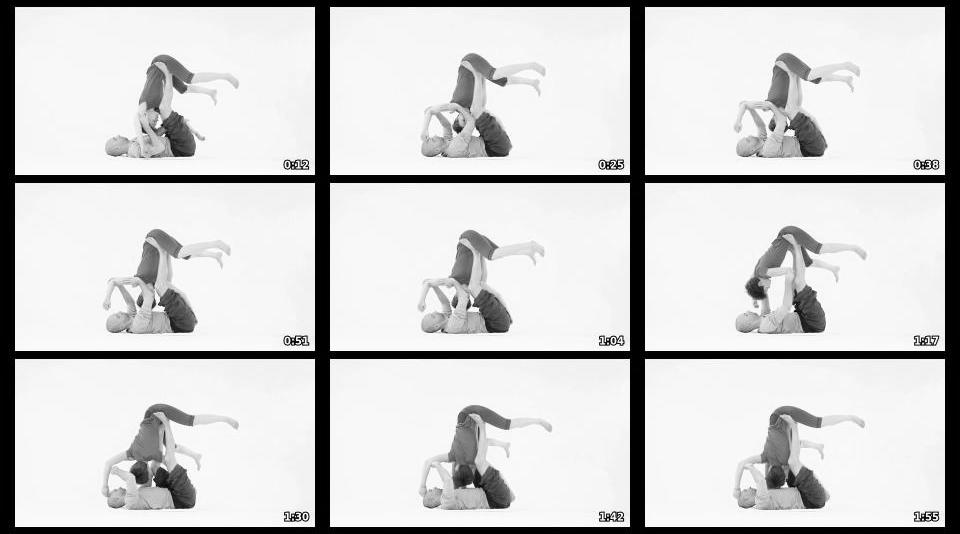Home > Advanced Flow > Arm Between Legs

Here we have a different torsion from the Folded Twist.
This version can be little more complicated to perform for a beginner user.
In this case the torsion we can offer can be more intense to the receiver and less demanding for the practitioner once we find the sense of it.
It's true that a torsion is not more effective only because more intense. The feeling of it must be evaluated with the response the body of the receiver is giving back to us.
22.1 general view
Please note: Do not force this element. Verbally check in with the receiver to make sure you are applying adequate pressure, but not too much.
Step by step:
0:00 to 0:13 - The giver lifts the right elbow of the receiver, then positions their left arm between his legs. He releases this hand and arm atop his right hamstring, not between his legs.
0:13 to 0:18 - The giver checks that the receiver's right shoulder blade is comfortably resting against his left knee. To ensure it in this instance, he slightly bends his left leg.
0:18 to 0:24 - The giver places his hand on the receiver's shoulder and applies pressure while holding the receiver's elbow with his other hand so it doesn't fall on his face. This position enables the receiver's legs to provide counter-pressure while he rotates their shoulders.
0:24 to 1:08 - This is an important part of this element. The giver uses his left knee to push on the receiver's shoulder blade while he uses his feet to rotate the receiver's hips in the opposite direction. This may look like a small twist, but it is adequatde since it is transmitted all the way from the ribs, through the shoulder blade, then on to the sacrum and hips.
1:08 to 1:12 - The receiver is gently returned to a neutral Forward Fold position.
1:12 to end - Repeat the same steps on the other side.
22.2 details
This illustrates some key details:
* note where the forearm of the receiver is placed on the giver's hamstring...not between his legs.
* note where the giver positions his knee on the receiver's shoulder blade.
* note how the pressure of his knee into her shoulder blade is not moving her shoulders so much as it is allowing a rotation of her spine.
* note how the movement of the giver's feet and legs allow him to rotate her hips.
* note how every step (especially during rotation) is made while monitoring the receiver's breathing.